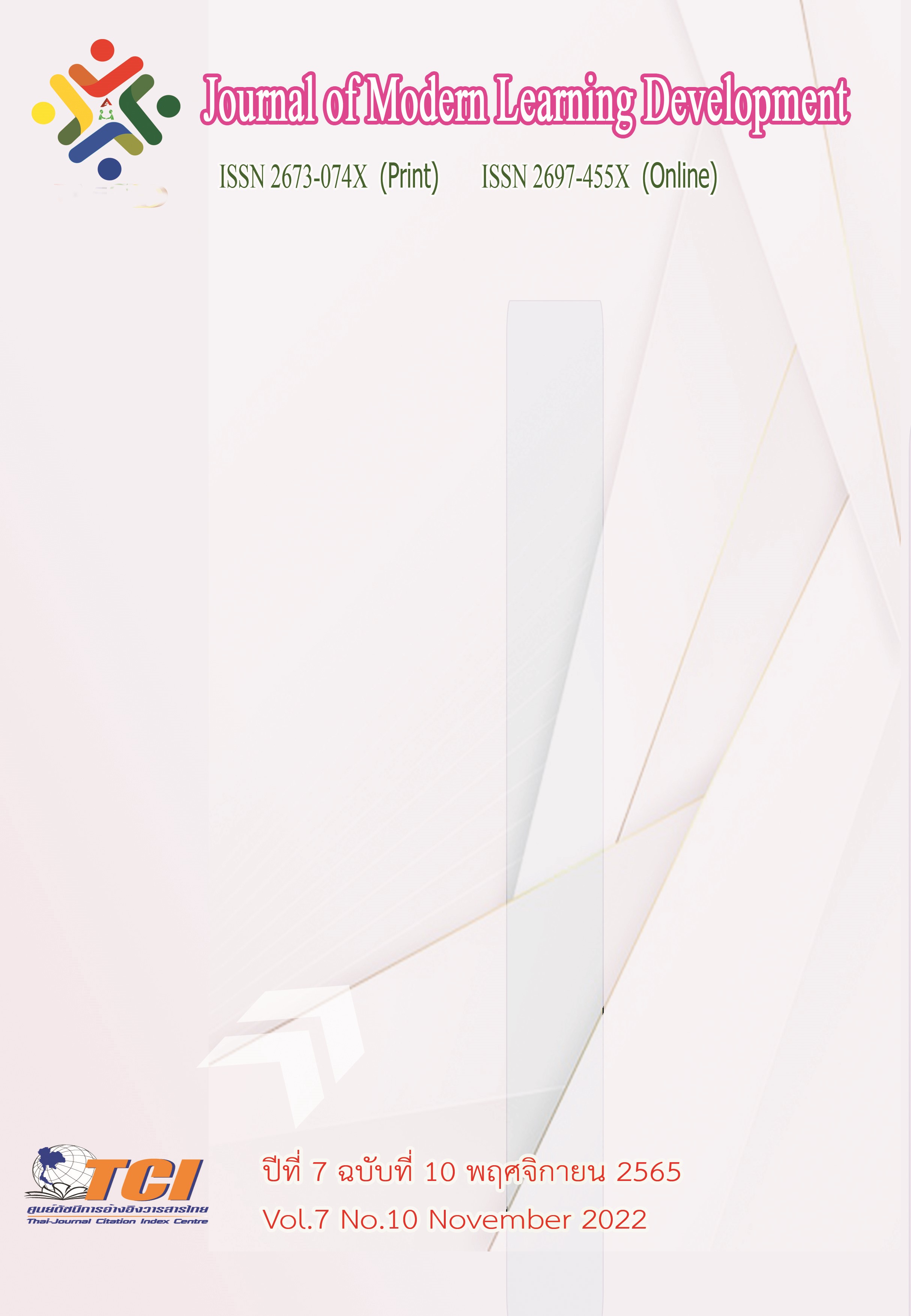The Consumer Adoption of Food Product Made from Coconut Beetle for Commercial Distribution of Tambol Namphong Community Enterprise, Namphong District, Khon Kaen Province
Main Article Content
Abstract
The objectives of this research were 1) to study factors influencing consumer adoption of coconut beetle products, and 2) to study the distribution and public relations of coconut beetle products for the Tambol Nam Phong Community Enterprise, Nam Phong District, Khon Kaen Province. The samples were 400 people who normally eat insect,aged 22-45 yearsin Khon Kaen, usingconvenient sampling. Data collection tool was questionnaire. The statistics used for data analysis include percentage, mean, standard deviation and multiple linear regressions for hypotheses testing.
The results showed that 1) the majority of respondents know andused to consume coconut beetles as well as the processed products from coconut beetles. Results of hypotheses testing demonstrated that the factors influencing intention to consume coconut beetle products at the 0.05 significantly confidence level was the attitude toward the coconut beetle, perceived behavior control, and subjective norms. 2) The suggestion the distribution and public relations of coconut beetle products had the results also showed preferred product forms of processed food from coconut beetles include coconut beetle crackers and coconut beetle chili paste. The preferred sales locations include online stores, mall, and open market.
Article Details
References
กัลยา วานิชย์บัญชา. (2564). สถิติสำหรับงานวิจัย. (พิมพ์ครั้งที่ 12). กรุงเทพมหานคร: โรงพิมพ์แห่งจุฬาลงกรณ์มหาวิทยาลัย.
เทคโนโลยีชาวบ้าน. (2564). เทคนิคเลี้ยง “ด้วงสาคู” ในกะละมัง ผสมอาหารยังไง? มีอุปกรณ์อะไรบ้าง?. ออนไลน์. สืบค้นเมื่อ 4 ธันวาคม 2564. แหล่งที่มา: https://www.technologychaoban.com/ bullet-news-today/article_119953
รุจิรา คุ้มทรัพย์, ธนาวรรณ สุขเกษม และรุ่งนภา สนุ่นดี. (2561). พฤติกรรมการบริโภคแมลงกินได้ตามวิถีภูมิปัญญาท้องถิ่น: กรณีศึกษา ตำบลปากช่อง อำเภอหล่มสัก จังหวัดเพชรบูรณ์. วารสารวิทยาศาสตร์และเทคโนโลยี มหาวิทยาลัยราชภัฏเพชรบูรณ์. 3 (2), 23-32.
วันวิสาข์ มงคล และบุษกรณ์ ลีเจ้ยวะระ. (2564). องค์ประกอบของการยอมรับโปรตีนจิ้งหรีดในออสเตรเลีย. วารสารพัฒนาการเรียนรู้สมัยใหม่. 6 (2), 208-222.
ศูนย์ความเป็นเลิศด้านเทคโนโลยีและนวัตกรรมอาหาร มหาวิทยาลัยวลัยลักษณ์. (2564). นักวิจัย มวล.คิดค้นวิธีเลี้ยงด้วงสาคูให้มี โอเมก้า 3 สูงกว่าน้ำมันปลา. ออนไลน์. สืบค้นเมื่อ 4 กุมภาพันธ์ 2565. แหล่งที่มา: https://www.thairath.co.th/news/local/south/2039304
สำนักงานสถิติแห่งชาติ. (2565). จำนวนประชากรจากการทะเบียน จำแนกตามอายุ เพศ ภาค และจังหวัด พ.ศ. 2564. ออนไลน์. สืบค้นเมื่อ 4 กุมภาพันธ์. แหล่งที่มา: https://view.officeapps.live.com/ op/view.aspx?src=http%3A%2F%2Fstatbbi.nso.go.th%2Fstaticreport%2FPage%2Fsector%2FTH%2Freport%2Fsector_01_11101_TH_.xlsx&wdOrigin=BROWSELIN
สิริวัฒน์ วงษ์ศิร, รัทนา ทาปา และสิทธิพงษ์ วงศ์วิลาศ. (2555). แมลงกินได้ ทางเลือกในภาวะเกิดภัยพิบัติ. ออนไลน์. สืบค้นเมื่อ 13 มกราคม 2565. แหล่งที่มาhttp://legacy.orst.go.th/royin2014/ upload/246/FileUpload/2829_5204.pdf
สุปาณี เลี้ยงพรพรรณ และ สมชาย เลี้ยงพรพรรณ. (2556). การเลี้ยงด้วงงวงมะพร้าวในจังหวัดสงขลาและจังหวัดพัทลุง. วารสารมหาวิทยาลัยทักษิณ. 13 (1), 40-45.
Ajzen, I. (2012). The theory of planned behavior. In P.A.M. Van Lange, A.W. Kruglanski, and E.T. Higgins (Eds.). Handbook of theories of social psychology. (pp. 438-459). Thousand Oaks, CA: Sage Publications.
Bae and Choi (2021) Consumer acceptance of edible insect foods: an application of the extended theory of planned behavior. Nutrition Research and Practice, 15 (1), 122–135.
Black, K. (2016). Business Statistics: For Contemporary Decision Making. 9th ed. John Wiley & Sons.
Boone, L.E. and Kurtz, D.L. (2015). Contemporary Marketing. Boston: Cengage Learning.
Chang, H.P., Ma, C.C. and Chen, H.S. (2019). Climate Change and Consumer’s Attitude toward Insect Food. International Journal of Environmental Research and Public Health, 16, 1606. doi:10.3390/ijerph16091606
Cranney, K. (2021). An industry with legs: Australia's first edible insects roadmap. Retrieved December 7, 2021, from https://www.csiro.au/en/news/news-releases/2021/an-industry-with-legs-australias-first-edible-insects-roadmap
Gravel, A. and Doyen, A. (2020). The use of edible insect proteins in food: Challenges and issues related to their functional properties. Innovative Food Science & Emerging Technologies, 59. https://doi.org/10.1016/j.ifset.2019.102272
Hartmann, C. and Siegrist, M. (2017). Consumer perception and behaviour regarding sustainable protein consumption: A systematic review. Trends in Food Science & Technology, 61, 11-25.
Kane, B. and Dermiki, M. (2021) Factors and conditions influencing the willingness of Irish consumers to try insects: a pilot study. Journal of Agricultural and Food Research, 60 (1), 43-58.
Liu, A.J., Li, J. and Gomez, M.I. (2019). Factors Influencing Consumption of Edible Insects for Chinese Consumers. Insects, 11 (1), 10.
Mancini, S., Sogari, G., Menozzi, D., Nuvoloni, R., Torracca, B., Moruzzo, R., et al. (2019). Factors Predicting the Intention of Eating an Insect-Based Product. Foods, 8 (7), 270-282.
Sekaran,U. & Bougie, R. (2020). Research Methods for Business. 8th ed. Hoboken, NJ: John Wiley & Sons.
Sogari, G., Menozzi, D. and Mora, C. (2018). The food neophobia scale and young adults’ intention to eat insect products. International Journal of Consumer Studies, 43, 68-76.
Thielen, L.V., Vermuyten, S., Storms, B., Rumpold, B. and Campenhout, L.V. (2018). Consumer acceptance of foods containing edible insects in Belgium two years after their introduction to the market. Journal of Insects as Food and Feed, 5 (1), 35-44.
Wendin, K.M.E. and Nyberg, M.E. (2021). Factors influencing consumer perception and acceptability of insect-based foods. Current Opinion in Food Science, 40, 67-71.
Yamane, T. (1973). Statistics: An Introductory Analysis. 3rd ed. New York: Harper and Row.


